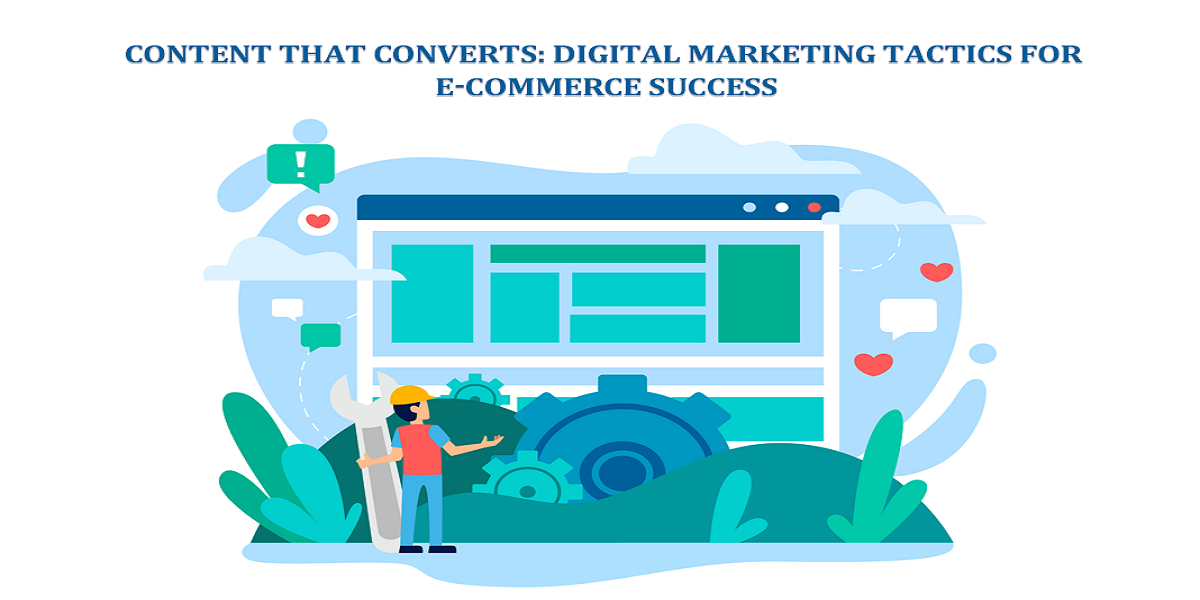
How Focused Technology Platforms are Revolutionizing Security Testing
- By Vijaya Shree
- 22-04-2024
- Technology
A recent study by IBM found a whopping 433% increase in the average cost of a data breach over the last 11 years. This highlights the critical need for robust security measures in today's software development landscape.
Consider the infamous Equifax data breach of 2017. A vulnerability in a web application left the sensitive data of over 147 million people exposed. This incident serves as a stark reminder of the potential consequences of inadequate security testing.
Traditional security testing methods struggle to keep pace with the breakneck speed of modern development. This is where focused technology platforms come in. These platforms address the unique challenges of modern security testing by leveraging automation, integration, and advanced analytics.
The Example of How Focused Technology Platforms Revolutionize Security Testing:
A developer is working on a user login feature for the social media app. The platform identifies a potential vulnerability in the code that could allow attackers to steal user passwords (XSS vulnerability). Here's how the platform helps:
- Instant Alert: The developer receives an immediate notification highlighting the vulnerable code snippet and the potential risk associated with it.
- Detailed Explanation: The platform provides a clear explanation of the vulnerability and suggests remediation steps. The developer can understand the issue without needing in-depth security knowledge.
- Automated Fix Suggestions: In some cases, the platform might even suggest automated fixes for simple vulnerabilities, further streamlining the remediation process.
Focused Technology Platforms: Empowering Modern Security
These innovative platforms address the unique challenges of modern security testing by harnessing the power of automation, integration, and advanced analytics. Here's where focused technology platforms come in. These platforms address the unique demands of modern security testing by:
- Embracing Automation: Manual testing, though essential, is a time-consuming and resource-draining endeavor. Focused platforms automate repetitive tasks such as code scanning, vulnerability identification, and penetration testing. This frees up valuable time for security professionals, allowing them to focus on complex issues, strategic analysis, and proactive threat hunting.
- Integration with Development Workflows: Security shouldn't be an afterthought bolted onto the development process. Focused platforms seamlessly integrate with developer tools and CI/CD pipelines. This enables security testing to occur early and often throughout the development lifecycle. By integrating security testing from the get go, vulnerabilities are caught early, before they snowball into critical security issues later in the development cycle.
- Leveraging the Power of AI and Machine Learning: Modern platforms go beyond simple automation. They leverage the power of artificial intelligence and machine learning to analyze vast quantities of data and identify emerging threats. These platforms can learn from past vulnerabilities and predict future attacks, empowering organizations to develop proactive defense strategies.
- Addressing Cloud-Native Security: Cloud adoption is exploding. Focused platforms cater to this shift by offering specialized security solutions designed specifically for cloud environments. These solutions secure infrastructure, containers, and serverless functions, ensuring a holistic security posture that safeguards your entire cloud footprint.
Challenges In Selecting a Focused Technology Platform for Security Testing:
These platforms, while revolutionary, come with their own set of hurdles that need to be addressed:
-
Security Expertise Gap:
While platforms automate tasks, skilled security professionals are still needed to interpret results, analyze complex vulnerabilities, and develop strategic security plans. To address this, organizations can invest in continuous training and upskilling programs for their security teams to ensure they have the necessary expertise.
Additionally, partnering with external security experts or consulting firms can provide valuable insights and guidance.
-
False Positives and Negatives:
Automation can lead to a high number of false positives (alerts that aren't actual vulnerabilities) and false negatives (missed vulnerabilities). Security professionals need to filter through these and prioritize real threats.
Implementing advanced machine learning algorithms and AI-driven analytics within the platform can help minimize false positives and negatives by continuously learning from past data and improving accuracy over time. Regular calibration and tuning of the platform based on feedback from security analysts can also enhance its effectiveness.
-
Integration Complexity:
Integrating platforms with existing workflows and tools can be complex, requiring technical expertise and potentially causing disruptions during implementation. Organizations should carefully assess the compatibility of the platform with their existing infrastructure and processes before adoption. Choosing platforms that offer comprehensive documentation, robust APIs, and support for common integration standards can streamline the integration process.
Additionally, involving key stakeholders from IT, development, and security teams early in the planning phase can help identify potential integration challenges and mitigate them proactively.
-
Vendor Lock-In:
Reliance on a specific platform can lead to vendor lock-in, making it difficult and expensive to switch to a different platform in the future. To avoid this, organizations should prioritize platforms that offer flexibility and interoperability with other security tools and technologies. Open-source platforms or those based on industry standards can provide greater freedom and reduce the risk of vendor lock-in. Negotiating flexible contracts with vendors that allow for easy migration or transition to alternative solutions can also mitigate the impact of vendor lock-in.
Additionally, regularly evaluating the performance and value proposition of the chosen platform against emerging technologies and market trends can help organizations make informed decisions about their security testing ecosystem.
By implementing these additional strategies alongside the previously mentioned solutions, organizations can effectively address the challenges associated with selecting and using
focused technology platforms for security testing. This ensures they not only leverage the platform's revolutionary potential but also mitigate potential limitations and build a robust and adaptable security posture.
Strategies for Overcoming Challenges in Selecting a Focused Technology Platform for Security Testing
Here are some key solutions to consider when selecting and implementing a focused technology platform:
-
Identifying Needs and Capabilities:
Conduct a security needs assessment to define your specific requirements (e.g., web application security, cloud security).
Prioritize your security goals (e.g., faster development cycles, enhanced threat detection) to guide you towards platforms that cater to those needs.
Research and compare platforms to identify feature sets that align with your needs and budget.
-
Integration and Compatibility:
Evaluate pre-built integrations offered by the platform with your existing development tools and CI/CD pipelines. This minimizes the need for custom development and ensures a smoother integration process.
If pre-built integrations aren't available, consider platforms with open APIs that allow for custom integrations with your specific tools.
Run a pilot program with a few shortlisted platforms to assess their compatibility with your environment and identify any potential integration challenges before full deployment.
-
Cost and Value:
Request free trials or demos to test the platform and assess its value proposition in your environment.
Calculate ROI by estimating potential cost savings and revenue gains from improved security and faster development cycles. This helps justify the investment in a security testing platform.
Negotiate pricing with vendors, especially for multi-year subscriptions or large deployments.
-
Security and Vendor Lock-In:
Investigate the vendor's security track record and certifications to ensure they have robust security practices in place to protect your data.
Choose platforms with open APIs that offer more flexibility and allow for integration with other security tools, reducing vendor lock-in.
Select vendors with strong customer support to ensure you can get the most out of the platform and resolve any issues that may arise.
-
Scalability and Future Needs:
Choose cloud-based platforms that offer inherent scalability and can easily adapt to your growing security testing needs as your organization expands.
Look for vendors with a strong innovation roadmap who are committed to continuous improvement and developing new features to address evolving threats and technologies.
Regularly evaluate your platform needs to ensure the chosen platform continues to meet your requirements as your organization and the security landscape evolve.
By implementing these solutions, you can overcome the challenges associated with focused technology platforms and leverage their transformative potential to build secure software efficiently.
Benefits of Focused Technology Platforms The advantages of adopting focused technology platforms are far-reaching:
- Turbocharged Development: Imagine slashing security testing time by automating repetitive tasks. Focused platforms streamline the security testing process, freeing up security professionals and developers to focus on innovation. This translates to faster feature releases without compromising security.
- Ironclad Defenses: These platforms act as security bloodhounds, continuously scanning for vulnerabilities, predicting potential attacks, and identifying emerging threats through the power of AI and machine learning. This proactive approach
strengthens your overall security posture, making it significantly harder for attackers to breach your systems. - Cost Efficiency Champion: Traditional security testing can be a resource drain. Focused platforms automate many tasks, reducing the need for manual testing and streamlining the process. Additionally, by catching vulnerabilities early, they prevent costly breaches and rework, leading to significant cost savings in the long run.
- Developer Nirvana: Seamless integration with developer tools fosters a culture of "security ownership" among developers. They receive real-time feedback on potential security issues within their code, allowing them to fix problems early in the development cycle. This fosters a more efficient and secure development experience for everyone involved
- Improved Scalability: Traditional security testing often struggles with large and ever evolving codebases. Imagine a complex application growing rapidly. Manual testing becomes a logistical nightmare. Focused platforms, however, can often scale efficiently. They can automate tasks like vulnerability scanning and penetration testing across vast codebases, handling complex deployments with greater ease. This ensures consistent security testing throughout the development lifecycle, even for massive projects.
- Enhanced Collaboration: Security testing thrives on strong collaboration between security professionals and developers. Focused platforms can act as a bridge, facilitating communication and streamlining workflows. Imagine a platform that automatically flags potential security issues in a developer's code editor, prompting immediate discussion and resolution. This fosters a more collaborative environment where security becomes a shared responsibility, leading to faster issue resolution and a more secure development process.
- Reduced Risk of Human Error: Let's face it, manual testing is susceptible to human error. Testers might miss a vulnerability due to fatigue or overlook a specific scenario. Focused platforms can significantly reduce this risk by automating many repetitive tasks. Automating vulnerability scanning and penetration testing ensures consistent and thorough testing, minimizing the chance of human error that could leave critical vulnerabilities undetected.
- Regulatory Compliance: Many industries, like healthcare or finance, have strict security regulations. Focused platforms can be a valuable tool for ensuring compliance. Imagine a platform that automates specific security testing procedures mandated by regulations. Additionally, these platforms can generate detailed reports that demonstrate compliance efforts during audits. This reduces the burden on security teams and simplifies the compliance process.
- Improved Reporting and Analysis: Focused platforms can offer advanced reporting features that provide a more comprehensive view of your organization's security posture. Imagine a platform that can generate reports not just on identified vulnerabilities, but also on trends over time. This allows you to identify areas where vulnerabilities are more prevalent, allowing for targeted security improvements. Additionally, these reports can be used to prioritize security efforts by focusing on areas with the highest risk.
- Security Expertise on Demand: While some organizations have robust internal security teams, others might have limited expertise. Here's where some focused platforms come in. They may offer access to a pool of security experts who can provide on-demand support and guidance. Imagine having access to a team of security professionals to consult with on complex vulnerabilities or for strategic planning. This can be particularly valuable for organizations that are just starting to build their security practices.
The Future of Security Testing: A Focus on Automation and Intelligence
Moreover, the future of security testing will likely see an increased emphasis on proactive threat hunting and predictive analytics, enabled by AI and machine learning algorithms. These technologies will allow organizations to anticipate and mitigate security risks before they materialize, enhancing resilience against emerging threats.
Focused technology platforms are not just a fad; they represent the future of security testing. By offering automation, integration, and advanced analytics, they empower organizations to build secure software in a fast-paced development environment.
As technology continues to evolve, these platforms will adapt and provide even more sophisticated security solutions. This continuous evolution ensures a safer digital landscape for everyone, mitigating the ever-present threats that lurk in the digital shadows.
Recent blog

How NASA Uses Web Design to Optimize User Experience in Space Control
Web Design | 03-05-2024
Content that Converts: Digital Marketing Tactics for E-Commerce Success
E-commerce | 02-05-2024.png)




